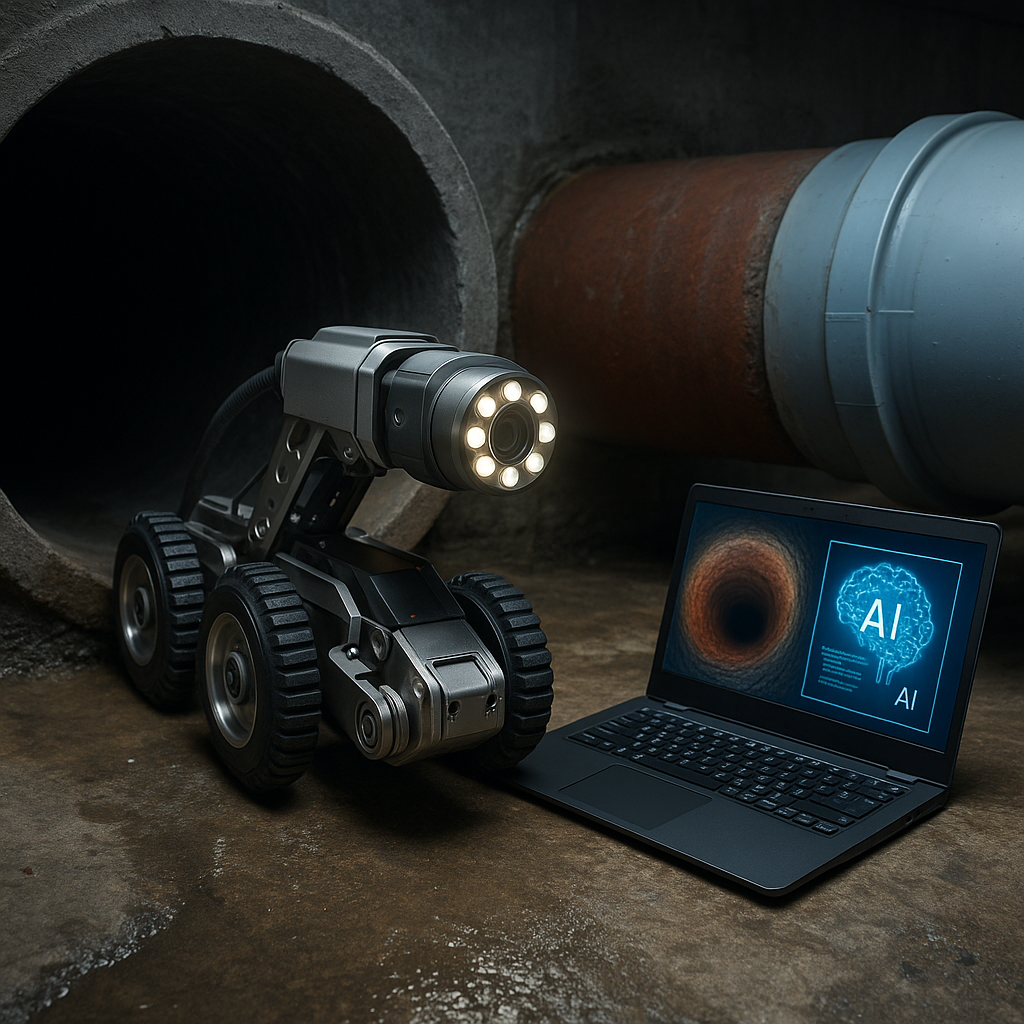Selecting the Best Pipe Material in 2024
Discover the best pipe materials for sewer systems in 2024, balancing durability, compliance, and cost with advanced inspection technologies.

Selecting the Best Pipe Material in 2024
In the evolving landscape of sewer inspection and maintenance, selecting the right pipe material is crucial. With advancements in technology, stricter regulations, and growing environmental consciousness, the decision-making process for pipe materials involves a careful balance of durability, compliance, inspection compatibility, and cost-effectiveness.
Latest Industry Developments
New Technologies and Equipment
-
Robotics and AI: Modern sewer inspection is increasingly driven by robotics and autonomous systems. Equipped with high-definition cameras, sensors, and AI-powered defect detection, these technologies enable precise identification of pipe material degradation such as cracks, corrosion, and joint displacement.
-
Advanced Imaging and 3D Mapping: Technologies providing detailed spatial analysis help assess the suitability and lifespan of different pipe materials under various environmental stresses.
-
Real-Time Monitoring: Smart sensors integrated into sewer systems allow for continuous assessment of pipe integrity, facilitating predictive maintenance and timely material replacement decisions.
Industry Regulations and Standards
-
Compliance Requirements: Local, state, and federal regulations, including EPA standards, are becoming more stringent, demanding pipe materials that minimize leakage and environmental contamination risks.
-
Digital Documentation: Automated reporting systems help utilities demonstrate compliance and maintain records of inspections and repairs related to pipe materials.
-
Material Preferences: Regulations often favor durable, corrosion-resistant materials to reduce maintenance frequency and environmental impact.
Market Trends and Business Opportunities
-
Market Growth: The sewer inspection systems market is projected to expand from USD 500 million in 2024 to USD 800 million by 2033, driven by smart city initiatives and infrastructure modernization.
-
Sustainable Materials: There is increasing demand for eco-friendly and sustainable pipe materials that align with water efficiency and environmental protection goals.
-
Challenges for Smaller Municipalities: High upfront costs of advanced technologies influence material selection toward cost-effective yet reliable options.
Safety Protocols and Best Practices
-
Remote Inspection Technologies: These reduce worker exposure to hazardous environments and influence the preference for pipe materials that can be inspected and maintained with minimal human entry.
-
Enhanced Safety Measures: Portable gas detectors, real-time video feeds, and digital logs enhance safety during inspection and maintenance.
-
Compatibility with Technology: Best practices include selecting pipe materials compatible with robotic inspection and repair technologies.
Recent Case Studies or Success Stories
-
Autonomous Robots: Robots successfully navigating complex sewer networks demonstrate the ability to detect material defects early, enabling targeted repairs and extending pipe service life.
-
AI-Driven Recognition: Automated defect recognition powered by AI has reduced human error in material condition assessments, improving maintenance efficiency and cost savings.
Cost and Pricing Information
-
Initial Investments: The high initial costs of advanced inspection technologies influence pipe material choice toward those that reduce long-term maintenance and inspection costs.
-
Cost Reduction Over Time: Technological innovation is driving down costs, making high-performance materials and smart inspection tools more accessible.
-
Lifecycle Benefits: Cost considerations balance upfront expenses with benefits such as durability and ease of inspection.
Practical Tips for Pipe Material Selection
- Assess Environmental Conditions: Choose materials that withstand the specific environmental stresses of your sewer system.
- Evaluate Long-Term Costs: Consider the lifecycle costs of materials, not just initial expenses.
- Ensure Compliance: Select materials that meet or exceed regulatory standards.
- Leverage Technology: Opt for materials compatible with advanced inspection technologies to facilitate maintenance.
- Prioritize Safety: Choose materials that enable safe inspection and repair practices.
Summary
Selecting pipe materials in 2024 requires balancing durability, environmental compliance, inspection compatibility, and cost-effectiveness. Materials that withstand corrosion, allow for robotic and AI-assisted inspection, and align with sustainability goals are favored. The integration of advanced inspection technologies and stricter regulations is pushing the industry toward smarter, safer, and more sustainable pipe material choices, supported by growing market opportunities and evolving best practices.